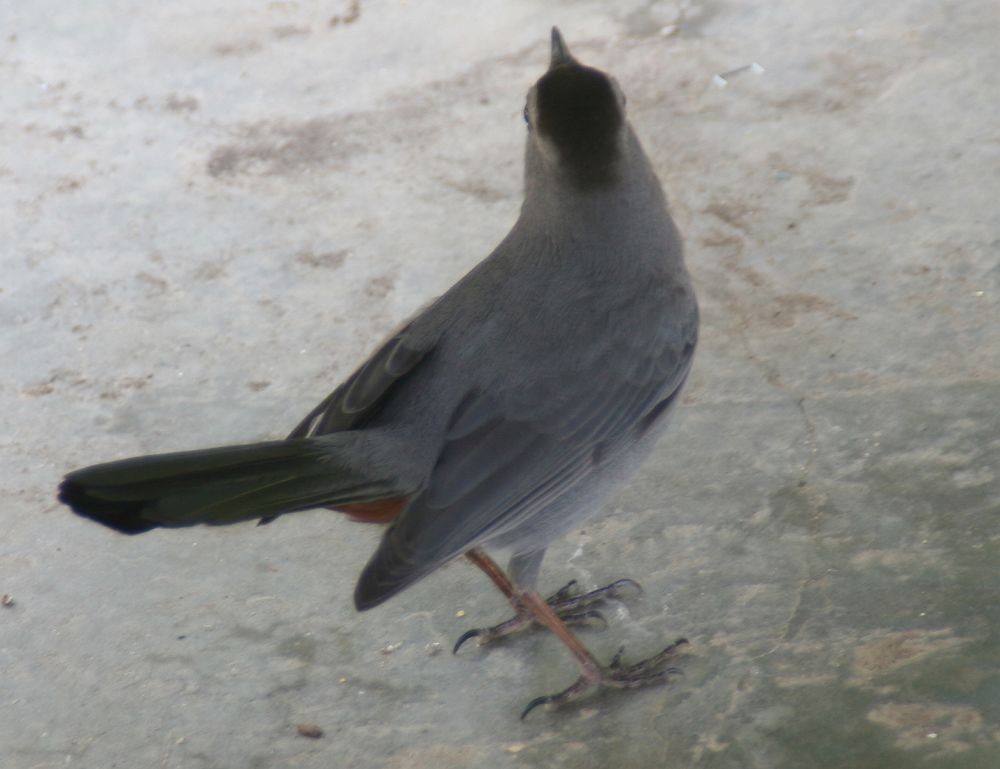Grey Catbird
A species of Dumetella Catbirds, Also known as Slate-colored Mockingbird Scientific name : Dumetella carolinensis Genus : Dumetella Catbirds
Grey Catbird, A species of Dumetella Catbirds
Also known as:
Slate-colored Mockingbird
Botanical name: Dumetella carolinensis
Genus: Dumetella Catbirds
Content
Description People often ask General Info
 Photo By Photo by David J. Stang , used under CC-BY-SA-4.0 /Cropped and compressed from original
Photo By Photo by David J. Stang , used under CC-BY-SA-4.0 /Cropped and compressed from original Description
The grey Catbird is a medium-sized songbird commonly found among thickets and dense shrubs, where it searches for berries and insects. Named after its cat-like call, the grey Catbird is actually able to produce numerous complex sounds. It can mimic the calls of other birds, frogs, and machines much like its close relatives, the mockingbirds.
Size
22 - 23 cm
Life Expectancy
10 years
Nest Placement
Shrub
Clutch Size
1 - 6 eggs
Incubation Period
2 - 3 broods
Number of Broods
12 - 15 days
Nestling Period
10 - 11 days
Feeding Habits
Grey Catbird's diet is 50% fruit, including holly berries, cherries, elderberries, and blackberries. They feed on insects like ants, beetles, grasshoppers, midges, caterpillars, moths, mealworms, and earthworms especially in summer. They can be garden pests, damaging crops like raspberries, grapes, and strawberries.
Habitat
Grey Catbird prefers habitats with dense shrubbery such as woodland edges, scrublands, and overgrown fields, but steers clear of dense, pine-dominated forests. They thrive in environments with protective cover like thickets and vines. Adaptable to various climates and altered landscapes, they are also commonly found along roadsides and in residential areas. During winter, grey Catbird opts for forested areas with berry-rich thickets, often near water.
Nest Behavior
Grey Catbird females build nests over 5-6 days, with males sometimes contributing materials. Nesting involves precise timing for building and egg-laying, with careful parental care for the eggs and young.
Nest Characteristics
Grey Catbird's nest is a bulky, open cup situated in dense shrubs, trees, or vines, often dogwood or cherry. Concealed at about 4 feet high, it's constructed from twigs, straw, bark, mud, and occasionally trash, with a fine lining of grass, hair, rootlets, and pine needles. It measures around 5.5 inches across and 2 inches deep.
Dite type
Insectivorous
People often ask
General Info
Feeding Habits
Bird food type
Bird Feeder Type

Platform
Sounds
Call
Recording location: Mexico
Call
Recording location: United States
Behavior
Grey Catbird engage in a variety of activities throughout their day, including hopping through understory vegetation and executing short, low flights. They exhibit a strong territorial instinct, particularly in the breeding season, with males singing conspicuously and energetically repelling other birds. Uniquely, both sexes maintain respective territories even in winter, which is unusually territorial behavior for that season among bird species. Confrontational displays involve grey Catbird puffing up feathers, tail spreading, and bill pointing upward. A peculiar and somewhat controversial behavior observed is the occasional destruction of eggs and nestlings from other woodland bird species.
Species Status
Not globally threatened.
Scientific Classification
Phylum
Chordates Class
Birds Order
Perching birds Family
Mimids Genus
Dumetella Catbirds Species
Grey Catbird